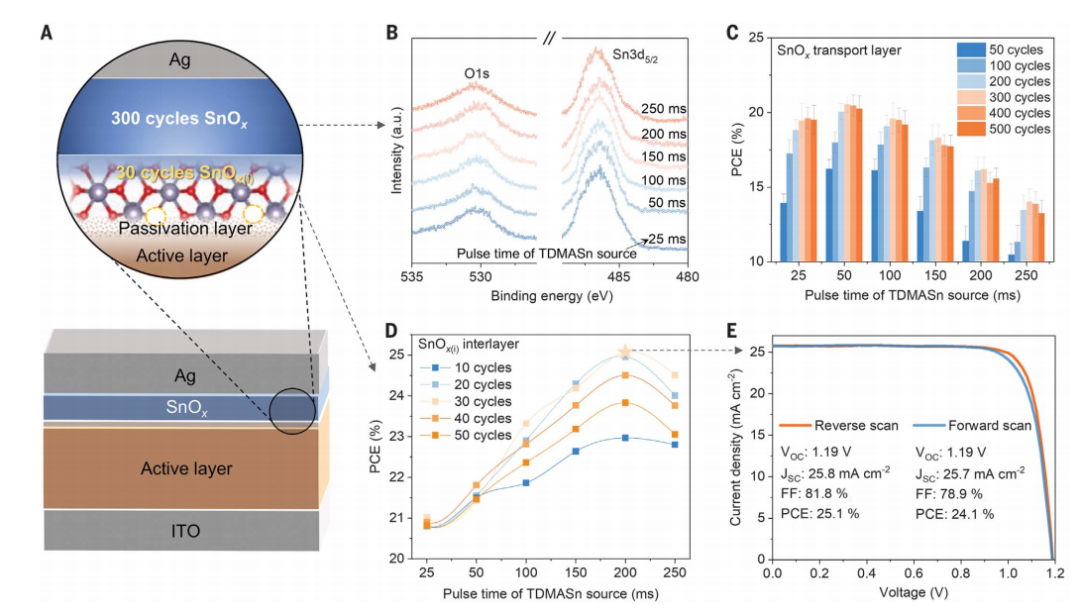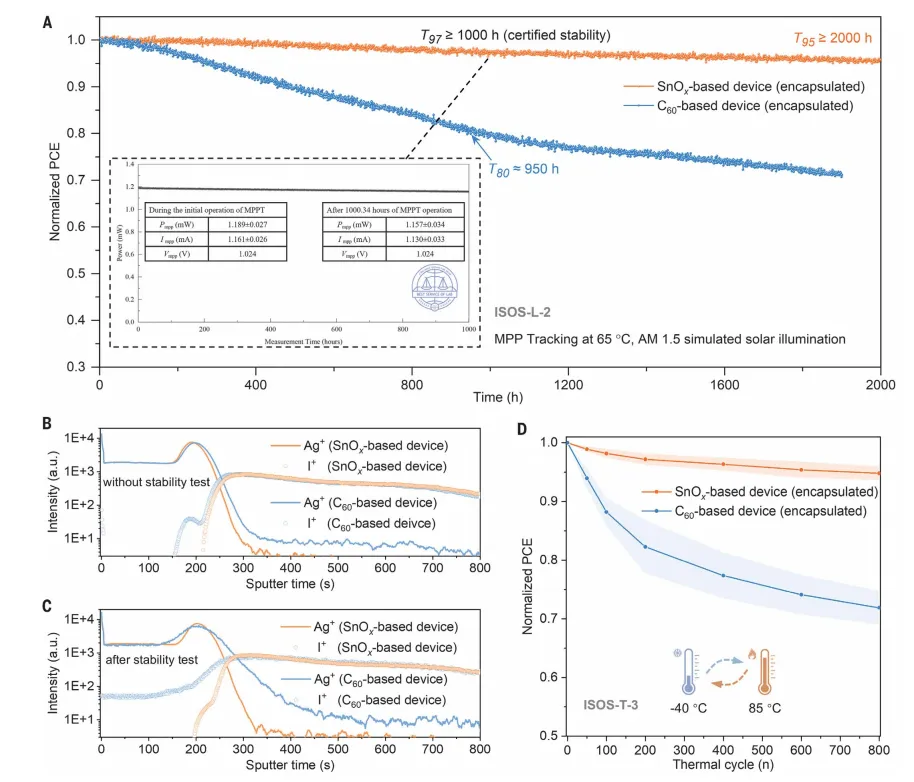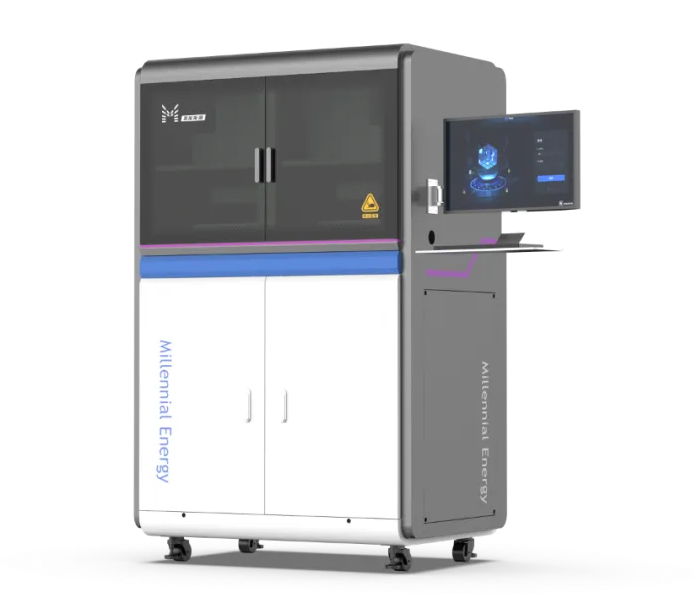
Quantum Efficiency Tester
PL/EL Integrated System
PV-Reflectumeter
3D Confocal Microscope
In-Line Four Point Probe Tester
Four Point Probe Tester
In-Line Thin Film Thickness Tester
Raman Spectrometer
FTIR Spectrometer
Spectrophotometer
Automatic Spectroscopic Ellipsometer
Contact Resistance Tester
Ultra depth of field 3D microscope
Auto Visual Tester
VMM PV Vision Measuring Machine
Solar Cell Horizontal Tensile Tester
Steady State Solar Simulator for Solar Cell
Solar Cell UV Aging Test Chamber
Solar Cell Comprehensive Tensile Tester
Visual Inspection Tester
Wet Leakage Current Tester
PV Module EL Tester
PV Module UV Preconditioning Chamber
Steady State Solar Simulator for PV Module
Current Continuous Monitor
Potential Induced Degradation Test
Bypass Diode Tester
LeTID Test System
Reverse Current Overload Tester
Impulse Voltage Tester
Hipot Insulation Tester
Ground Continuity Tester
Hipot Insulation Ground Tester
Damp Heat Test Chamber
Humidity Freeze Test
Thermal Cycle Test Chamber
Dynamic Mechanical Load Tester
Static Mechanical Load Tester
Hail Impact Tester
Robustness of Termination Tester
Module Breakage Tester
Cut Susceptibility Tester
Peel Shear Strength Tester
Universal Testing Machine (Single-arm)
Universal Testing Machine (Double-arm)
Glass Transmittance Tester
Acetic Acid Test Chamber
EVA Degree of Crosslinking Test System
Junction Box Comprehensive Tester
Drop ball tester
Semi-automatic scanning four-probe tester
Stylus Profilometer
Maximum Power Point Tracker
Perovskite Glass Transmittance Tester
Perovskite P1 Laser Scribing Multifunctional Testing Machine
Perovskite Online PL Tester
Perovskite Online Sheet Resistance Tester
Online Perovskite Film Thickness Tester
Perovskite Process Inspection Workstation
Portable IV Curve Tester
Portable EL Tester
Portable Thermal Imaging Tester
Solar Module Multi-Channel Testing System
PV Inverter Power Quality Tester
Drone EL Tester
IV Tester
IVEL Cell Sorting Machine
Latest Science: Research on depositing tin oxide (SnOx) in perovskite solar cells using atomic layer
Date : 2024-10-14Views : 280
Perovskite solar cells (PSCs) have attracted attention due to their high efficiency and low cost, but long-term stability is a major challenge to their commercialization. Environmental factors such as humidity, oxygen, temperature changes, and light can degrade cell performance and lifetime. Researchers Gao et al. achieved SnOx/Ag deposition without fullerene by co-depositing perovskite and hole-selective contacts while protecting the perovskite. SnOx prepared by ALD technology serves as a durable inorganic electron transport layer. By adjusting the oxygen vacancy defects in the SnOx layer, a power conversion efficiency (PCE) of more than 25% was achieved. Through third-party certification, perovskite solar cells showed better stability than traditional p-i-n PSCs, with a T97 lifetime of more than 1000 hours and a PCE of more than 95% after 2000 hours of continuous operation under simulated AM1.5 lighting conditions at 65°C.

Structure and performance of perovskite solar cells

The structure of PSC is a simple stack of glass/ITO/active layer/passivation layer/SnOx/Ag. The active layer is composed of specific components, and ETL SnOx is deposited on the active layer through ALD.
The structure and detailed performance data of perovskite solar cells illustrate the importance of optimizing the SnOx layer through atomic layer deposition technology to improve cell performance. By adjusting parameters in the ALD process, researchers can significantly improve the power conversion efficiency and stability of perovskite solar cells.
Effect of SnOx interlayer on the performance of perovskite solar cells

The effect of the SnOx interlayer on the performance of perovskite solar cells was explored in depth. Experimental data showed that by adjusting the concentration of oxygen vacancies in the SnOx interlayer, non-radiative recombination and energy losses can be reduced, thereby improving the efficiency and stability of the cell. Theoretical calculations further supported the experimental observations, indicating that the formation of oxygen vacancies and the introduction of the PDINN buffer layer help optimize the extraction and transport of carriers, thereby improving cell performance.
Stability testing of perovskite solar cells

The stability performance of encapsulated and unencapsulated SnOx-based perovskite solar cells under continuous 1-sun illumination at 65°C is demonstrated. SnOx-based perovskite solar cells showed excellent stability exceeding 95% of the initial PCE after 2000 hours of continuous operation (T95 ≥ 2000 hours). Stability testing conducted by a third-party organization also confirmed that after 1,000 hours of continuous operation, the device maintained more than 97% of the initial PCE. Thermal cycle test: Demonstrates the performance changes of perovskite solar cells under thermal cycle testing, with test conditions ranging from -40°C to 85°C in a dark environment. The average degradation of SnOx-based perovskite solar cells after 800 thermal cycles is about 4.7%, while the average efficiency of the control cells dropped by 28.1% under the same conditions. The SnOx layer not only improves the efficiency of the cell, but also significantly enhances its stability, especially in preventing iodide ion diffusion and in thermal cycling tests. The test results demonstrate that the SnOx layer plays a key role in protecting perovskite materials from environmental influences, which is crucial to improving the commercialization potential of perovskite solar cells.
Stability test of SnOx-based perovskite solar cells under different environmental conditions

ISOS-D-1 stability test: shows the efficiency change of the device stored in dark indoor conditions.
SnOx-based perovskite solar cells, whether encapsulated or unencapsulated, showed almost no performance degradation, maintaining more than 99.1% of the initial power conversion efficiency (PCE) for 2000 hours.
The control group cells (traditional p-i-n structure) showed obvious performance degradation when not encapsulated, while the encapsulated control group cells maintained 98.9% of the initial PCE.
ISOS-D-3 stability test: shows the efficiency change of perovskite solar cells under high temperature and high humidity conditions (85°C and 85% relative humidity).
Unencapsulated SnOx-based perovskite solar cells showed less than 3.0% degradation after 1000 hours, while the encapsulated SnOx-based perovskite solar cells further reduced the degradation to 2.1%.
The cell package in the control group attenuated by more than 16.4% under the same conditions, indicating that external packaging alone is not enough to withstand the impact of extreme environments.
ISOS-LC-1 Stability Test: Demonstrates the light switch stability test of perovskite solar cells in an indoor environment. The test conditions are a 12-hour light and 12-hour dark cycle. The PCE of the unencapsulated SnOx-based perovskite solar cell decreased by 2.5% after 42 cycles, while the encapsulated control cell decreased by 9.7%.
ISOS-O-1 Outdoor Aging Test: Demonstrates the efficiency changes of perovskite solar cells when stored under outdoor conditions, with the device in an open circuit state.
The unencapsulated SnOx-based perovskite solar cells only decayed by 1.1% after 50 days in the outdoor environment, while the encapsulated control cells decayed by 4.8%.
Through a series of standardized environmental stability tests, the performance maintenance of SnOx-based perovskite solar cells under different environmental conditions was comprehensively evaluated. Test results show that the SnOx layer not only improves the efficiency of the cell, but also significantly enhances its stability under various environmental conditions, including thermal cycling, indoor storage, high temperature and humidity, light on and off cycles, and outdoor aging. These test results further confirm that the SnOx layer plays a key role in protecting perovskite materials from environmental impacts, providing important reference data for the commercialization of perovskite solar cells.
Millennial Maximum Power Point Tracker

E-mail: market@millennialsolar.com
Millennial Maximum Power Point Tracker uses A+AA+ grade LED solar simulator as aging light source, and provides strong support for the research of perovskite solar cells with its advanced technology and multifunctional design.
· Light source grade: A+AA+, spectral matching grade A+, uniformity grade A, long-term stability grade A+
· Effective spot size: ≥250*250mm (customizable)
· Adjustable light intensity: 0.2sun, 0.5sun, 1sun, 1.5sun, 4 gears
· Independently controllable power: 300-400nm/400-750nm/750-1200nm
Thermal Cycle Test Chamber

E-mail: market@millennialsolar.com
Thermal Cycle Test Chamber can verify and evaluate the reliability and stability of perovskite solar cells, and identify manufacturing defects early through thermal fatigue-induced failure modes.
·Meeting standards: IEC61215-MQT11 (thermal cycle test); IEC61730-MST51 (temperature cycle test)
·Heating and cooling rate: -40℃~+85℃, linearly adjustable from 0~3.3℃/min
·Average power consumption: ≤100 KW·h (TC200 single cycle power consumption)
·Temperature range: -50℃ ~ +150℃
Humidity Freeze Comprehensive Chamber

E-mail: market@millennialsolar.com
Humidity Freeze Comprehensive Chamber demonstrates its superior performance in solar module testing with its intelligent energy-saving control, precise temperature and humidity regulation, and test methods that meet international standards. This equipment not only ensures the accuracy of the test, but also improves product quality, reduces energy consumption and operating costs.
·Meets standards: IEC61215-MQT12 (humidity freeze test); IEC61730-MST52 (humidity freeze test)
·Anti-fatigue capability
·Anti-moisture penetration capability
SnOx-based perovskite solar cells have performed well in a series of rigorous stability tests. Whether in continuous operation, thermal cycles, or different environmental conditions, these cells have shown excellent durability, providing strong technical support for more reliable and economical solar energy solutions. Millennial Solar can provide a series of environmental test chambers: Thermal Cycle Test Chamber, UV Preconditioning Chamber, Humidity Freeze Comprehensive Chamber, etc., to simulate the changes in ambient temperature, humidity, ultraviolet light, etc. of perovskite solar cells under different conditions to evaluate whether the cell performance meets the requirements.

































































